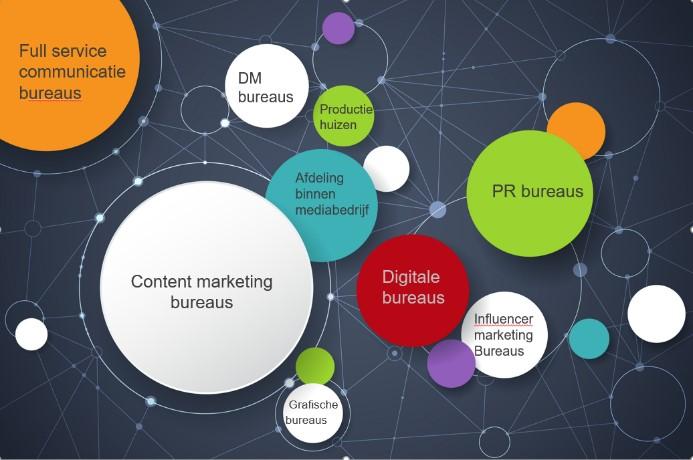The field of communication professionals, marketeers and journalists has changed radically under the influence of digitalisation. The platforms for placing media content increased exponentially, the graphical modalities and the possibilities for using moving images increased, as did the possibilities for interaction. This has thoroughly shaken up the field of communication and marketing. Agencies (communication agencies, marketing agencies, AV producers...) are doing their best to adapt their organisation to this new reality. They try to make optimal use of its possibilities, resulting in profound shifts in the field of journalism, communication and marketing.
At the organisational level, there are new players (influencer marketing agencies, content marketing agencies, digital agencies ...) and mergers and reorganisations. At the level of job profiles and the related competencies, there are also shifts and the emergence of new specialisations. With this research we want to provide a framework to better understand these shifts. The research seeks a typology of agencies and an overview of the associated job profiles.
The following research questions are central:
- What types of agencies are active in Flanders and Brussels today?
- Which (new) job titles and profiles do we distinguish within agencies?
- What competences lie behind these new profiles?
We combine several research methods:
- In year 1, based on desk research, we compile a database of agencies and analyse the domain and job descriptions on their websites;
- In year 2, we analyse various agency profiles by means of in-depth interviews;
- In year 3, we conduct a large-scale survey amongst agencies to identify problems and challenges related to technological innovations and the impact on the competencies and job positions of the content producer;
- In Year 4, we will valorise the research results and refine the survey tool. After all, the survey serves as a baseline measurement tool for a biennial monitor that we intend to continue to carry out after the end of this project. In this way, as a university of applied sciences, we keep an eye on further changes in the sector, which continue to be developed at a rapid pace.






